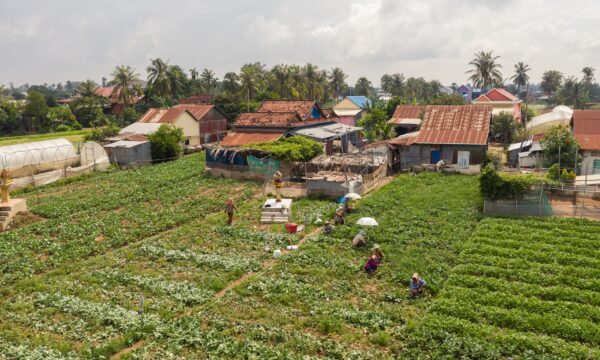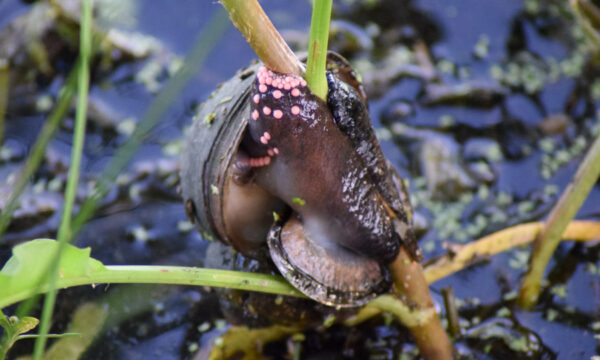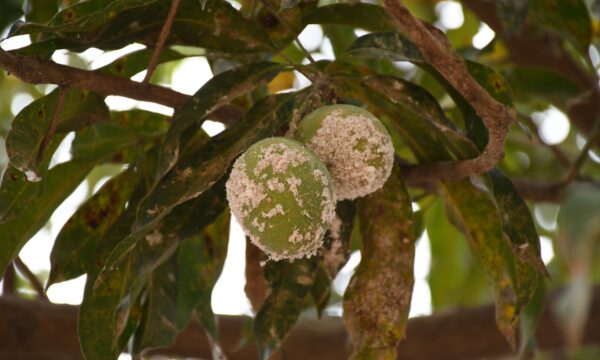Termites, numbering over 3,100 species worldwide, are infamous for their ability to wreak havoc on building structures and vegetation. The Coptotermes genus particularly stands out, containing the most termite pests, with 28 pest species. However, one species, in particular, has gained prominence as the most widespread and economically significant of them all. The Formosan subterranean termite (Coptotermes formosanus). Also commonly known as the Formosan super termite or oriental soil-nesting termite. Let’s explore the characteristics, impact, and various control measures associated with this destructive invader.
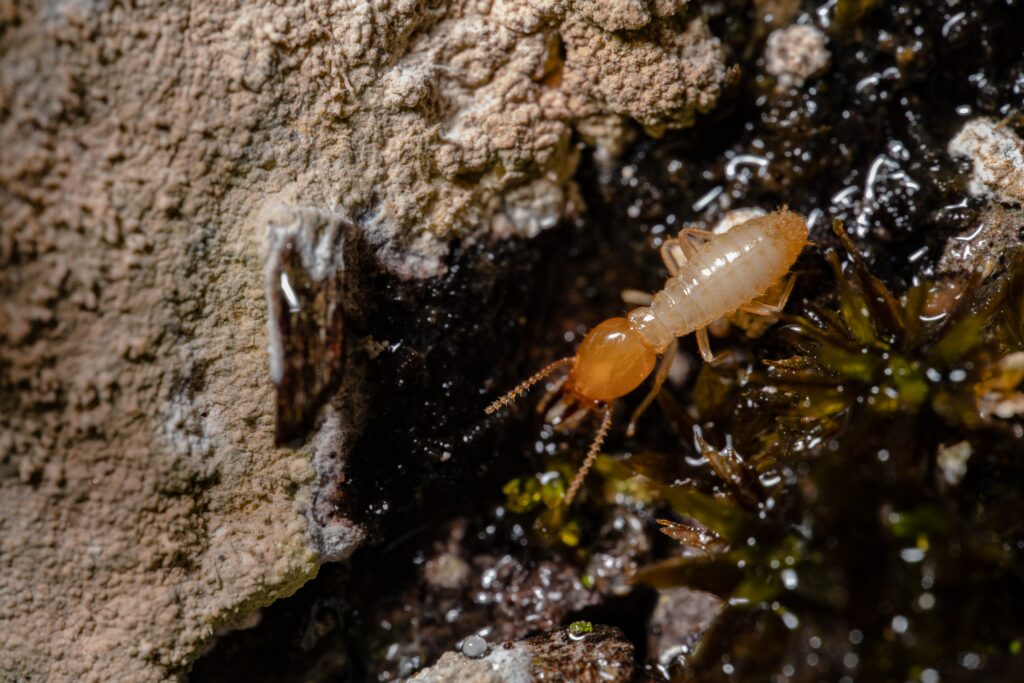
Biology and behaviour
A colony of Formosan subterranean termites consists of three castes: reproductive (king, queen, alates and immature alates), soldiers, and workers. Alates and soldiers are particularly useful for identification purposes. Alates are yellowish-brown, measuring 12-15mm in length, with small hairs on their wings. They engage in massive dispersal flights, known as swarms, during calm and humid evenings from April to July. Alates are attracted to light, so they are commonly found near windows and light fixtures. Soldiers have distinctive orange-brown oval heads, curved mandibles, and whitish bodies. When disturbed, they may secrete a white fluid, a defensive secretion, from a large opening in their heads.
Global Distribution
Originally described in Taiwan during the early 1900s, the Formosan subterranean termite derives its name from the former name of Taiwan, “Formosa.” This species has become a cause for concern worldwide and is included in the list of the 100 World’s Worst Invasive Species maintained by the Global Invasive Species Database.
Native to East Asia, specifically Taiwan and southern China, the Formosan subterranean termite has been inadvertently transported across the globe. It was introduced to Japan before the 1600s and to Hawaii in the late 1800s. Later, in the 1950s, it was reported in South Africa, and by the 1960s, it had found its way to the United States, initially appearing in Texas, Louisiana, and South Carolina. Since, it has spread across many south-eastern states of the USA, including Alabama, Florida, Georgia, Mississippi, North Carolina and Tennessee.
Symptoms and Impact
Formosan subterranean termites create large underground colonies, with a single colony potentially consisting of several million individuals. A colony can forage up to 300 feet in the soil, surpassing the capabilities of native subterranean termite species that exist in smaller numbers.
Formosan subterranean termites are known to attack a wide array of living plants, causing wilt and dieback. C. formosanus displays a broad host range. It infests various tree species such as the red maple (Acer rubrum), Atlantic white cedar (Chamaecyparis thyoides), camphor laurel (Cinnamomum camphora), citrus trees, eucalyptus, pines, and oaks.
Impact on buildings and other structures
When infesting structures, they construct foraging tubes measuring 0.5-1cm in diameter, connecting the soil to the building. Severe infestations can hollow out wood, leaving a paper-thin surface that appears blistered or peeled. The termites also create carton nests using termite faeces, chewed wood, and soil. These honeycomb-like nests can reach diameters of 1-1.5 meters. They are commonly found in structural voids between walls and beneath sinks.
Additionally, they can attack non-cellulose materials. Including plaster, plastic, and thin sheets of soft metal (like lead and copper) in search of food and moisture. Although these termites can exploit cracks in concrete, widening them to use as foraging routes, they cannot penetrate solid concrete.
Economic Impact of Formosan subterranean termite
The economic consequences of Formosan subterranean termite infestations are substantial. In New Orleans, where they were introduced in the 1950s, the annual cost of controlling these termites reaches an estimated $300 million. The pest is also considered the most economically important insect pest in Hawaii. It has posed a significant threat to historical structures such as the Iolani Palace in Honolulu. Their voracious appetite and large population sizes contribute to greater damage compared to that of native termite species.
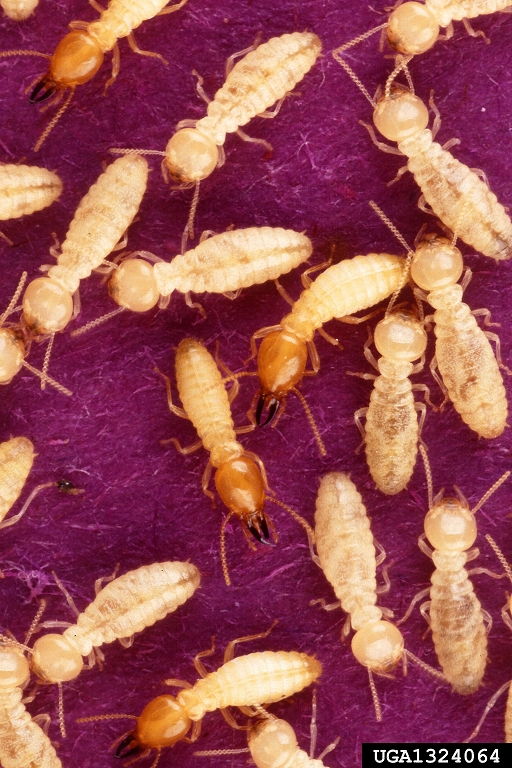
Photo by: Scott Bauer, USDA Agricultural Research Service (Bugwood.org)
Prevention and Control
Phytosanitary control methods
Approaches can be divided into phytosanitary measures, cultural control, biological control, and chemical control. Phytosanitary measures encompass regulations aimed at preventing the transportation of materials infested with termites. Although there are quarantine regulations in place to prohibit the transportation of termite-infested materials, enforcing them is virtually unfeasible. Surprisingly, there are no specific phytosanitary measures to prevent the transport of C. formosanus with potted plants. This is unlike the regulations for the Red imported fire ant (Solenopsis Invicta). To combat their spread, it is crucial not to transport wooden materials, plants, furniture, or soil from areas declared infested. Furthermore, maintaining cleanliness and hygiene within buildings and conducting regular inspections of buildings and trees are essential.
Cultural control and sanitary methods
Cultural control and sanitary methods focus on minimizing factors that attract termites. Formosan subterranean termites are attracted to the combination of water and wood (or other cellulose materials). To create a less attractive environment for termites, it is imperative to address leaky roofs, plumbing issues, irrigation problems, and other excessive moisture collection in buildings. During construction, using wood pressure-treated with preservatives like creosote or pentachlorophenol where wood meets soil can deter termites. Untreated wood should be avoided from being used in direct contact with the soil. Physical barriers like steel mesh and specific sizes of sand have also proven to be effective. It is advisable to prevent plants from growing onto house structures and avoid placing mulch against the house. Also, remove wood debris and refrain from stacking firewood against the house.
Biological control methods
Biological control methods have shown promise in laboratory studies, utilizing entomopathogenic nematodes, fungi, and bacteria to combat termite infestations. However, field trials have generally been less successful. Ongoing research explores the potential of fungi and bacteria associated with Formosan subterranean termites as biocontrol agents. Most recently, bacteria have been combined with clay (an attractant and spore stabilizer) and a chitin synthesis inhibitor (CSI) to effectively control C. formosanus in the lab. However, further field trials are still needed.
Chemical control methods
Chemical control methods play a vital role in termite management. Pre-construction treatments involve applying soil termiticides before the foundation is poured. Whilst for post-construction treatments, holes are drilled through slabs to inject insecticides beneath the foundations. Due to the vast populations of the Formosan subterranean termite, soil treatments tend to be less effective. Application beneath structures typically does not significantly impact the overall population, often only killing some termites and leaving the rest of the colony alive. Termite baits, utilizing active ingredients like CSIs, have emerged as an effective alternative to traditional soil treatments, offering colony-wide elimination. Over time, termites transfer the baits to other members of the colony, resulting in lethal doses for the majority of the colony and leading to its ultimate collapse.
When it comes to chemical control, it is crucial to consider country-specific variable regulations regarding the registration and use of pesticides. Consulting local agro-dealers, agricultural services, or referring to resources such as the EU pesticides database, PAN pesticide database, or your national pesticide guide is recommended for up-to-date and country-specific advice.
The Formosan subterranean termite poses a significant threat to both building structures and vegetation. By implementing a combination of prevention and control measures, it is possible to mitigate the impact of Formosan subterranean termites, protect structures and landscapes, and minimize economic losses. A comprehensive approach encompassing phytosanitary measures, cultural practices, biological control methods, and targeted chemical treatments can help safeguard homes, landscapes, and historical landmarks from the devastating impact of the Formosan subterranean termite.
Further reading
United States Environmental Protection Agency: Termites: How to Identify and Control Them
Pestnet’s Pacific Pests & Pathogens factsheets: Formosan subterranean termite factsheet
Nature Journal: Molting site fidelity accounts for colony elimination of the Formosan subterranean termites by chitin synthesis inhibitor baits
Related News & Blogs
5 common chilli pests and diseases
Chilli pests and diseases can considerably impact crop production. Not only can pest and disease outbreaks lead to severe yield losses, but they also reduce quality and lower market value. In many countries, including India, Bangladesh, Malawi, and Tha…
12 June 2025

